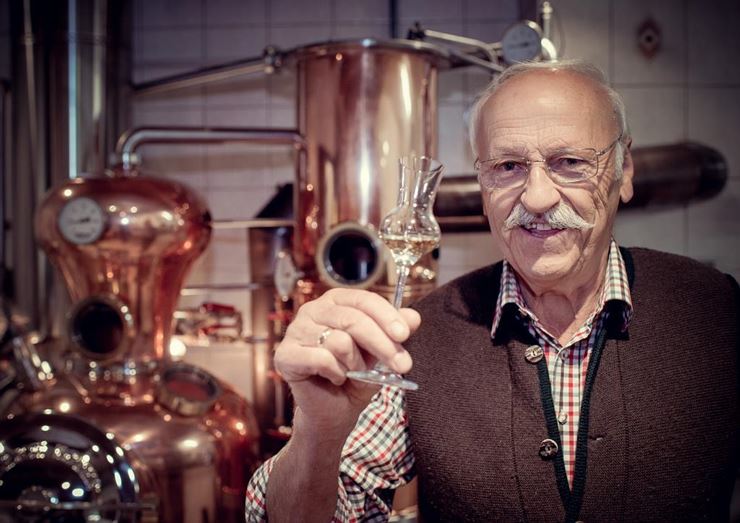Stix distillery - Thiersee
The Scent of Fruit - A Tyrolean-Styrian Blend
The fruit deliveries from the family orchard in Styria for hospitals, barracks, monasteries, and a few private customers led Hans Stix to Thiersee 50 years ago. But the sweetness of a special fruit made him stay: his future wife Kathi. This was the beginning of a successful Tyrolean-Styrian fine brandy connection.
Hans Stix's love for distilling schnapps was practically born with him. His parents had a small farm with a fruit trade in eastern Styria. As a schoolboy, Hans Stix was allowed to help his father with heating the distillation kettle. But his wife Kathi Stix was also familiar with schnapps distilling from her family's farm in Thiersee. They met during a fruit delivery. Kathi's attachment to her homeland guided the Styrian to Tyrol. Hans Stix moved his fruit trade and sales to Thiersee. "I like it here. I like the character of the Tyroleans. It's not all formalities here. And the Styrians and the Tyroleans get along well. Together, they make a great combination," he says cheerfully.
Jack of All Trades
In 1999, he finally acquired a 100-liter column distillation kettle. Since then, the Stix family has been busy distilling. Hans Stix pays particular attention to the quality of the distilling fruit. For him, quality comes before origin. He still harvests apples, plums, and wild pears in Styria, from his orchards that are fertilized and grazed only by horses. He gets his plums from Stans, where a special microclimate exists at an altitude of 1,000 meters. "The temperature difference between day and night is greater - that's why the fruit flavor is more pronounced," he explains. He has now planted quinces, plums, and rowanberries in Thiersee.
A Matter of Character
"A good distiller needs the following qualities: First, he must be meticulous in cleaning the fruit, the kettle, and the containers," Hans Stix explains while removing stems from several kilos of pears. "Second, a distiller must not be stingy." The first run during distillation, the forecut, must be precisely separated. As a child, he received the occasional slap if he didn't pay attention. Only then comes the heart, the actual fine brandy, the full fruit aroma in the alcohol. And again, the timing of the separation is crucial: In the tail run, the alcohol content drops sharply, and tannins and bitter substances increase. The art is to separate the different phases. Feeling and experience are two other essential ingredients. This results in a fine brandy that truly deserves the name. "You can recognize a high-quality brandy by its pleasant smell and the long-lasting memory of the fruit on the palate," Hans Stix enthuses. "To fully experience this taste, you also need the right glasses," adds Kathi Stix. They should be tulip-shaped, not too bulbous, not too straight. Just right. Like the glasses they use to serve their fine brandies to guests during tastings.
A Little Extra?
In his distillation kettle, Hans Stix also makes raspberry and strawberry brandies. But he is particularly proud of his apricot and grape brandies, which have won several awards in Tyrolean competitions as well as at the international Destillata competition. The mountain gin and cigar brandy have earned Hans Stix silver at Destillata. He collects the juniper for the gin in Riedenberg in Thiersee. The cigar brandy is an apple cuvée from Styrian apples that ages for at least three years in oak barrels. "It got its name because it goes so well with cigars," says Kathi Stix. Both brandies are somewhat spicier compared to the fruit brandies. With 45 - 48% alcohol content, they also have a bit more strength. Due to their harvesting locations in Thiersee and Styria, they symbolically represent the Tyrolean-Styrian couple Stix.
Open on Thursdays by appointment. Tastings and sales upon request.





